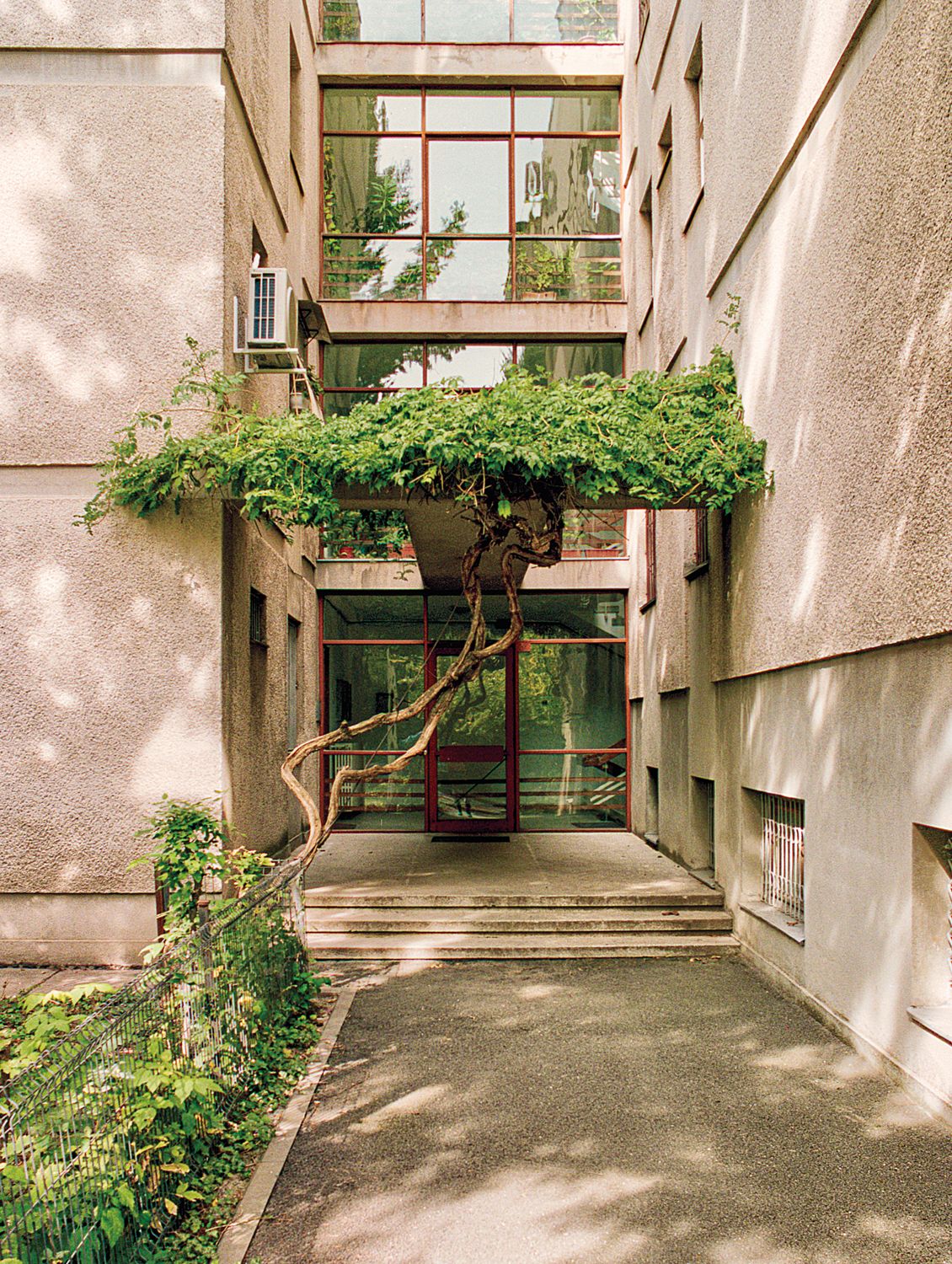Austere. Stark. Cold.
The common opinions about Brutalist architecture are a far cry from the way we often describe the natural world: lush, colorful, verdant.
But a new photobook is exploring nature’s relationship with Brutalist architecture — from a theater in Japan to a library in Canada — and finding beauty in the contrast.
Called “Brutalist Plants,” the book is a “mix of looking into the future but also looking back,” said Olivia Broome, curator of the book and creator of the @brutalistplants Instagram community of more than 30,000 followers.
Broome hopes the images will inspire people to look at the built environment differently — and see it as a place that can complement nature.
“Either we all exist in harmony with nature and concrete, or we all mess it up so badly that nature is going to overtake everything that we build,” she said.
Dystopia or utopia?
Brutalism, sometimes referred to as “New Brutalism,” is an architectural style typified by its imposing form, use of geometric shapes and clean lines, exposed concrete, and monochromatic color schemes.
Its popularity peaked between the 1950s and ‘70s and it’s commonly associated with the UK and Eastern Europe, but this international style has its roots in much earlier 20th-century structures from around the world, particularly those of Swiss architect Le Corbusier, whose work prioritized functionality and large, sculptural shapes.
Born in the UK, Broome grew up in Geneva, Switzerland, which first sparked her interest in Brutalism. “Where I grew up, there were a lot of mountains and concrete,” she said, adding that in Geneva there were a lot of buildings by Le Corbusier: “Looking back, (Brutalist buildings) feel like a homely space for me.”
The “Brutalist Plants” platform started as a hobby: Broome shared images on Tumblr before she moved it to Instagram in 2018. The account reposts the work of photographers, with tags and credits, and as the community has grown into the tens of thousands, many photographers and content creators now submit work to her.
Broome was attracted to the images because of the contrast of the cold concrete with the softness of nature, which has an ambiguous “dystopian or utopian feel.”
“A lot of them are quite modernist, which is a bit more like a utopia,” said Broome. Some of the photos imagine “how we could be living, with plants or balconies,” and the inclusion of architectural renders and AI-generated scenes show hopeful visions of our stark urban world co-existing peacefully alongside nature.
On the flip side, some of them have a darker feeling. “There are a few images in there where it’s genuinely overgrown architectural spaces that no longer exist,” she said, adding that many were submitted by urban explorers of abandoned buildings.
People are notably absent from the photos; most of the images are only of architecture and nature, but in a few instances, Broome said humans have been removed from the images to focus the narrative on the built environment’s relationship with nature, which Broome feels is muddled by human presence. “Nobody lives in the book, really. There are no human beings. It’s just plants doing their thing,” she added.
Controversial structures
Featuring 150 photos of buildings, artworks and sculptures, the book includes a mix of images shared on the Instagram account and unseen photos sourced elsewhere, said Broome.
With 41 countries featured in the book, Broome is excited to show the huge spread and variety of Brutalist works, and the architectural style’s influence on more recent structures and artworks.
One of the “most contested images” Broome shared with her audience on Instagram, which has also made the cut for the book, is of a sculpture by German artist Karsten Födinger. “It’s this slab of concrete that sits slightly slanted, held up by pine trees in a row. It kind of looks like a table of concrete that’s attached to these trees,” explained Broome. Online, some people commented it was “awful for the trees” and an affront to nature, while others felt the unity of concrete and wood — commonly used in house building — reflected ideas of shelter and put an artistic twist on it. “There was a lot of debate back and forth,” said Broome.
A lot of the images hold special meaning for Broome: a photograph of a building in Geneva is “two minute’s walk” from where her father lives, and some of the buildings photographed in Melbourne and Canberra in Australia are places she’s visited with family and friends.
Broome, who moved back to London to study design and journalism at university, now lives in the UK where there are many Brutalist buildings to provide inspiration — including the Barbican Theatre, where the book will be launched.
She believes Brutalist structures should be preserved for the future — and the integration of nature shows their adaptability.
“There’s a lot of Brutalist (architecture) that is endangered because people don’t see the value,” she said. “(But) there are more architects, and some feature in the book, that are working to make brutalism more accessible and more beautiful, and really showcase what it can do for different spaces.” – CNN
By Rebecca Cairns

